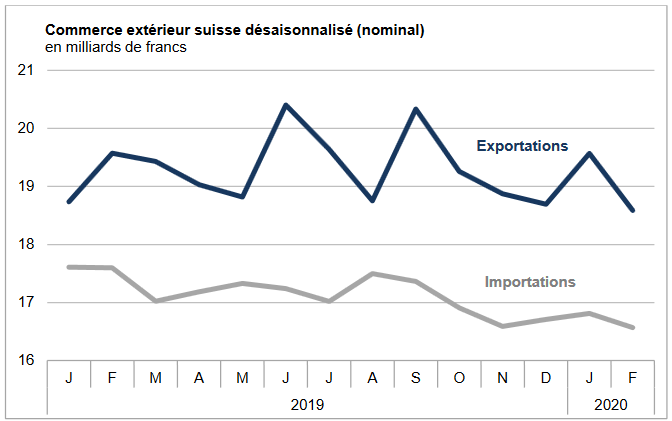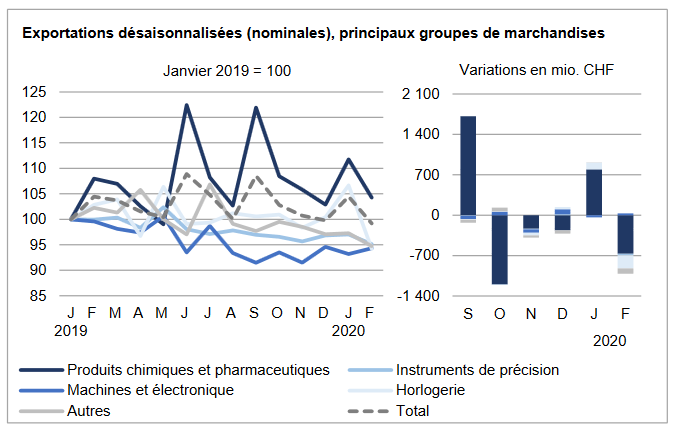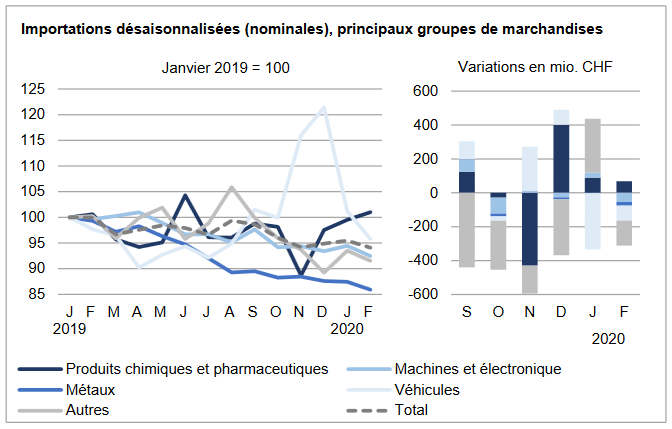We do not like Purchasing Power or Real Effective Exchange Rate (REER) as measurement for currencies. For us, the trade balance decides if a currency is overvalued. Only the trade balance can express productivity gains, while the REER assumes constant productivity in comparison to trade partners. Who has read Michael Pettis, knows that a rising trade surplus may also be caused by a higher savings rate while the trade partners decided to spend more. This is partially true. Recently Europeans started to increase their savings rate, while Americans reduced it. This has led to a rising trade and current surplus for the Europeans. But also to a massive Swiss trade surplus with the United States, that lifted Switzerland on the U.S. currency manipulation watch list. To
Topics:
George Dorgan considers the following as important: 2.) Trade Balance News Service Bunt [FR], 2) Swiss and European Macro, Featured, newsletter
This could be interesting, too:
Nachrichten Ticker - www.finanzen.ch writes Die Performance der Kryptowährungen in KW 9: Das hat sich bei Bitcoin, Ether & Co. getan
Nachrichten Ticker - www.finanzen.ch writes Wer verbirgt sich hinter der Ethereum-Technologie?
Martin Hartmann writes Eine Analyse nach den Lehren von Milton Friedman
Marc Chandler writes March 2025 Monthly
We do not like Purchasing Power or Real Effective Exchange Rate (REER) as measurement for currencies. For us, the trade balance decides if a currency is overvalued. Only the trade balance can express productivity gains, while the REER assumes constant productivity in comparison to trade partners.
Who has read Michael Pettis, knows that a rising trade surplus may also be caused by a higher savings rate while the trade partners decided to spend more. This is partially true. Recently Europeans started to increase their savings rate, while Americans reduced it. This has led to a rising trade and current surplus for the Europeans. But also to a massive Swiss trade surplus with the United States, that lifted Switzerland on the U.S. currency manipulation watch list.
To control the trade balance against this “savings effect”, economists may look at imports. When imports are rising at the same pace as GDP or consumption, then there is no such “savings effect”.
After the record trade surpluses, the Swiss economy may have turned around: consumption and imports are finally rising more than in 2015 and early 2016. In March the trade surplus got bigger again, still shy of the records in 2016.
Swiss National Bank wants to keep non-profitable sectors alive
Swiss exports are moving more and more toward higher value sectors: away from watches, jewelry and manufacturing towards chemicals and pharmaceuticals. With currency interventions, the SNB is trying to keep sectors alive, that would not survive without interventions.
At the same time, importers keep the currency gains of imported goods and return little to the consumer. This tendency is accentuated by the SNB, that makes the franc weaker.
Texts and Charts from the Swiss customs data release (translated from French).
Exports and Imports YoY DevelopmentAfter their strong increase the previous month, exports plunged 5.0% in February 2020 and thus continue on their negative trend that started in September 2019. Imports weakened by 1.4%. The trade balance closed with a surplus of 2.0 billion francs. In short ▼ Chemicals-pharma exports: -671 million francs ▼ North America: decline in both directions of traffic ▲ Exports to China: jump in February 2020 after a timid January |
Swiss exports and imports, seasonally adjusted (in bn CHF), February 2020(see more posts on Switzerland Exports, Switzerland Imports, ) Source: newsd.admin.ch - Click to enlarge |
Global evolutionAfter their strong growth of the previous month, seasonally adjusted exports fell 5.0% in February 2020 (actual: -3.3%). They have been on a negative trend since September 2019. Imports have stagnated since November 2019, down 1.4% (real: -0.1%). The trade balance surplus reached 2.0 billion francs. |
Switzerland Trade Balance, February 2020(see more posts on Switzerland Trade Balance, ) Source: investing.com - Click to enlarge |
ExportsWatchmaking exports at their lowest since September 2018 In February 2020, the decline in exit came from two key sectors: chemicals and pharmaceuticals as well as watchmaking. The former plunged 6.7% (-671 million francs), weighed down by the contraction of drugs as well as raw and basic materials. Watch exports dropped 11.7% (-224million) after shining the previous month. The machinery and electronics sector (+ 1.2%) posted an increase; the latter, however, resulted solely from the electronics division (+ 4.3%). Among the three main markets, Europe (-8.6%; -1.0 billion francs) and North America (-9.1%; USA: -358 million) registered red figures. Shipments to Asia, however, increased 2.6%. The decline of the Old Continent took root in Germany (-530 million), France (-195 million), Ireland (-117 million) and Austria (-79 million). As for growth with Asia, it rested solely on China. Indeed, after their plunge in the previous month, exports to the Middle Kingdom took the lift (+ 40.2%; above all chemistry-pharma). Turnover with Singapore plunged by a third, contrasting with its January 2020 boom. |
Swiss Exports per Sector February 2020 vs. 2019(see more posts on Switzerland Exports, Switzerland Exports by Sector, ) Source: newsd.admin.ch - Click to enlarge |
ImportsPharmaceuticals and jewelery moderate decline in imports The drop in imports was due to the contraction of vehicles (-89 million francs; aeronautics: -56 million) as well as the machinery and electronics sector (-55 million). For the latter, the negative trend that began in April 2019 continued. Metals also ground black (-1.7%). On the other hand, arrivals of chemical and pharmaceutical products (+68 million) as well as of jewelery (+23 million; group of other goods) increased. From a geographic perspective, deliveries of goods from North America (-8.2%; USA: -6.8%) and Asia (-0.6%) fell while those of Europestagnated . Within the latter, Germany (+154 million francs) and Ireland (+106 million) sent positive signals while France followed an opposite trend (-137 million). The Asian decline was mainly driven by the United Arab Emirates (-223 million), Japan (-71 million) and China (-51 million). |
Swiss Imports per Sector February 2020 vs. 2019(see more posts on Switzerland Imports, Switzerland Imports by Sector, ) Source: newsd.admin.ch - Click to enlarge |
Tags: Featured,newsletter
